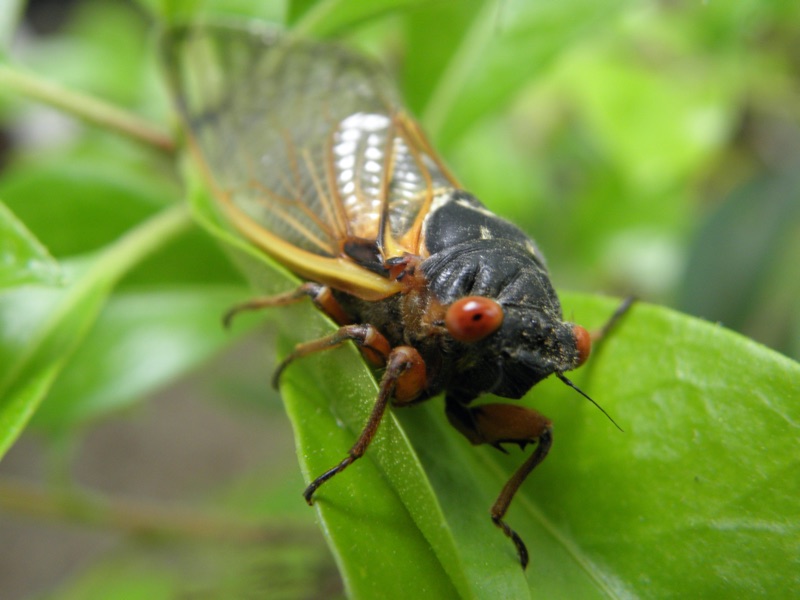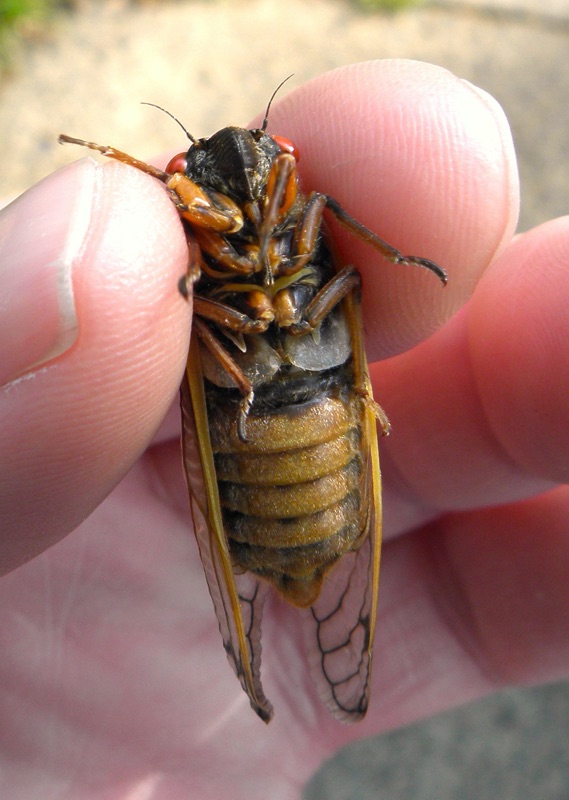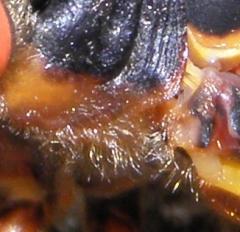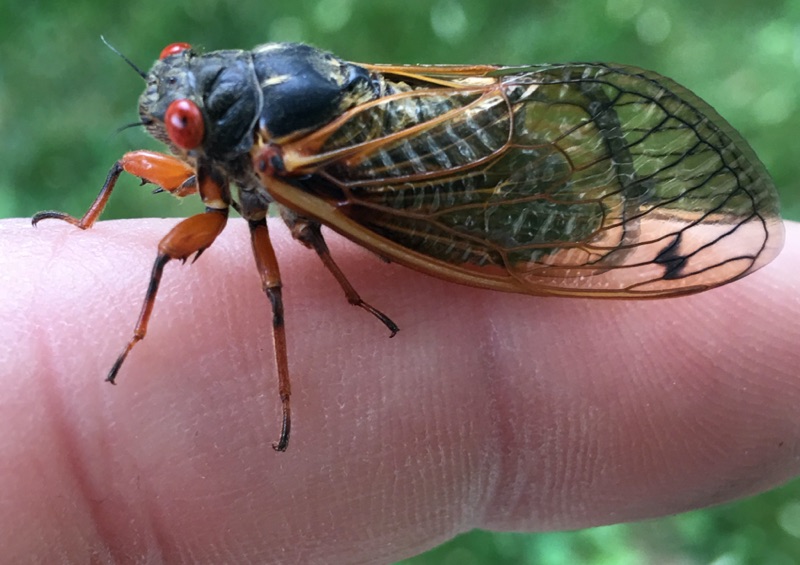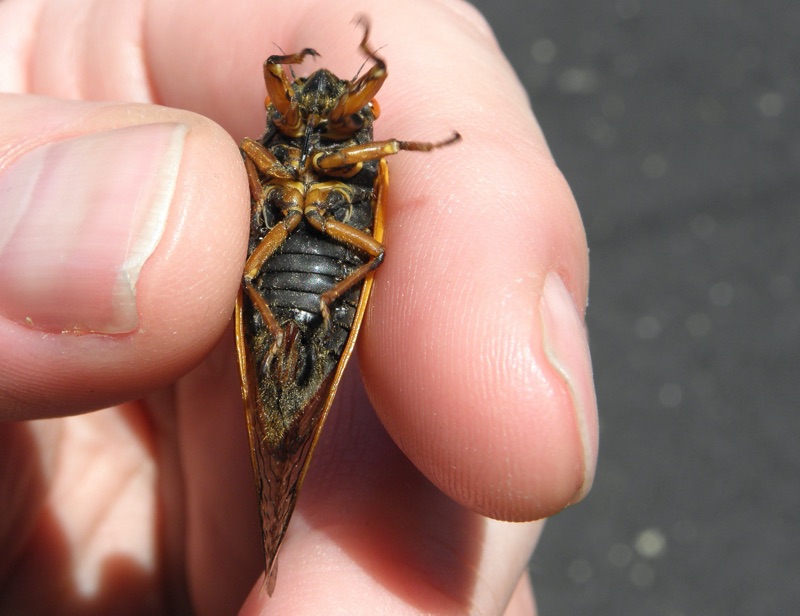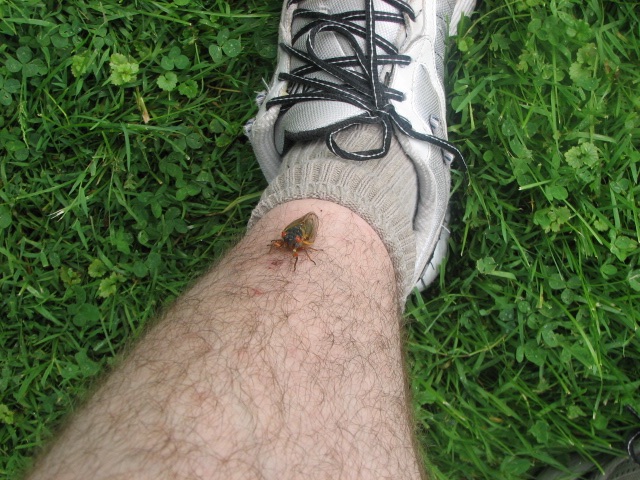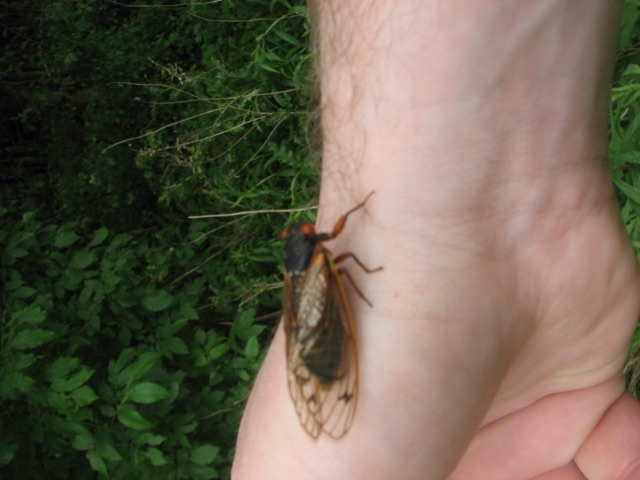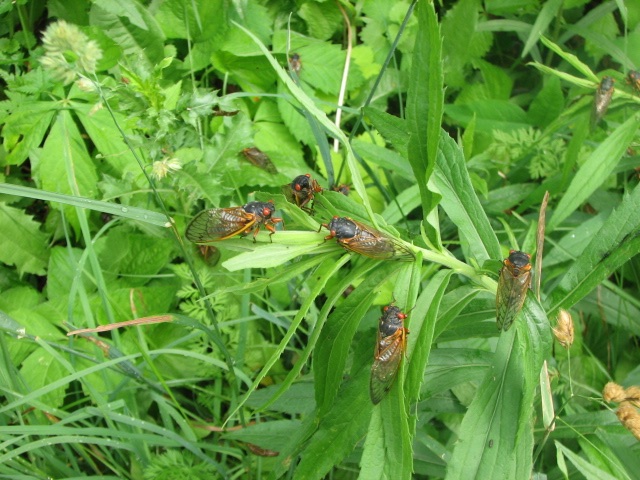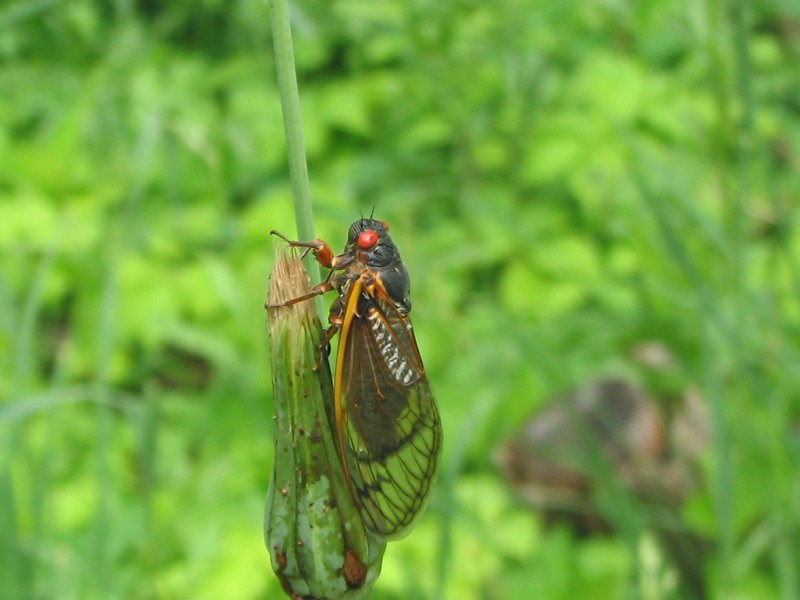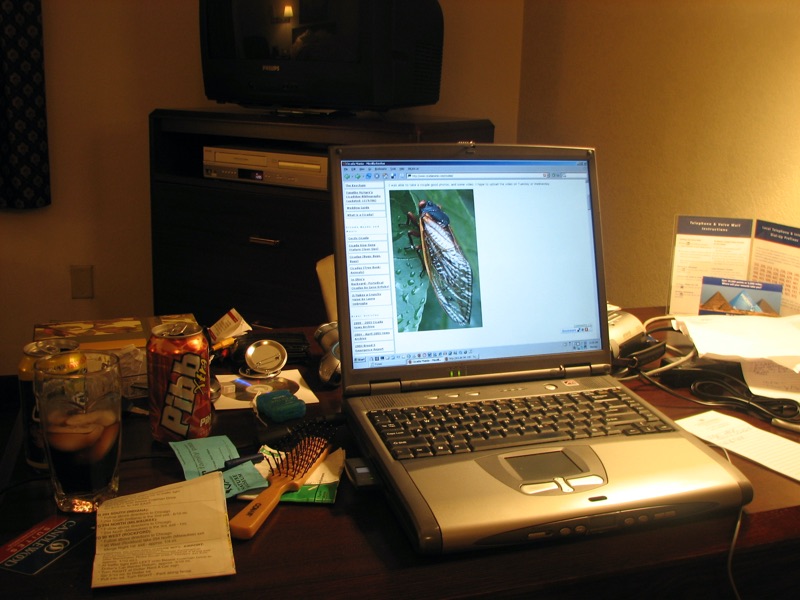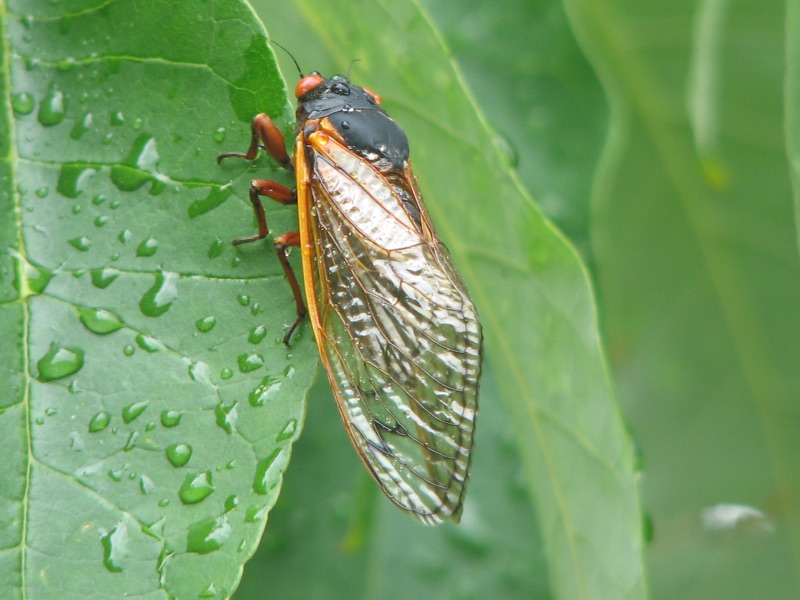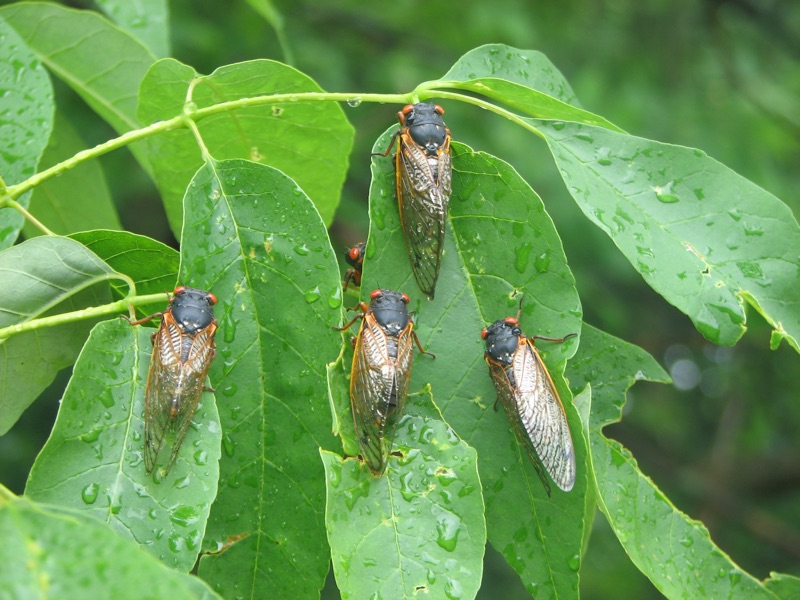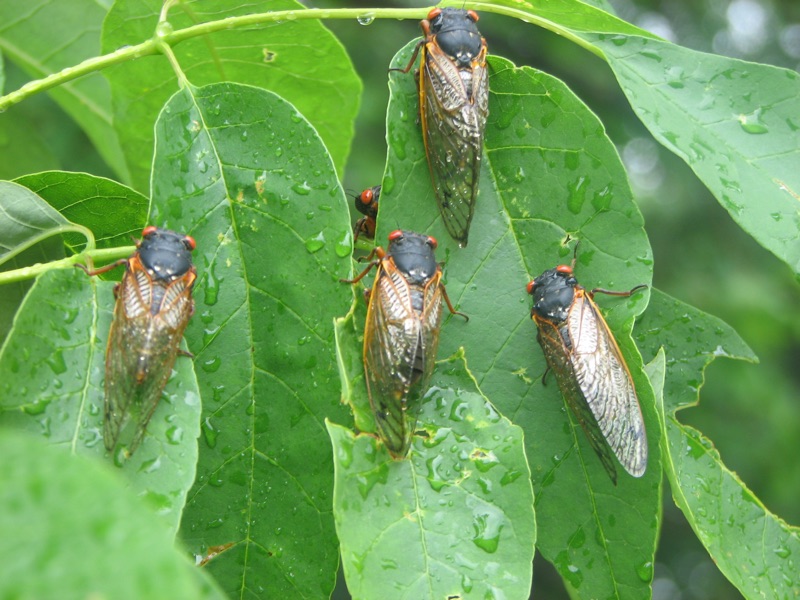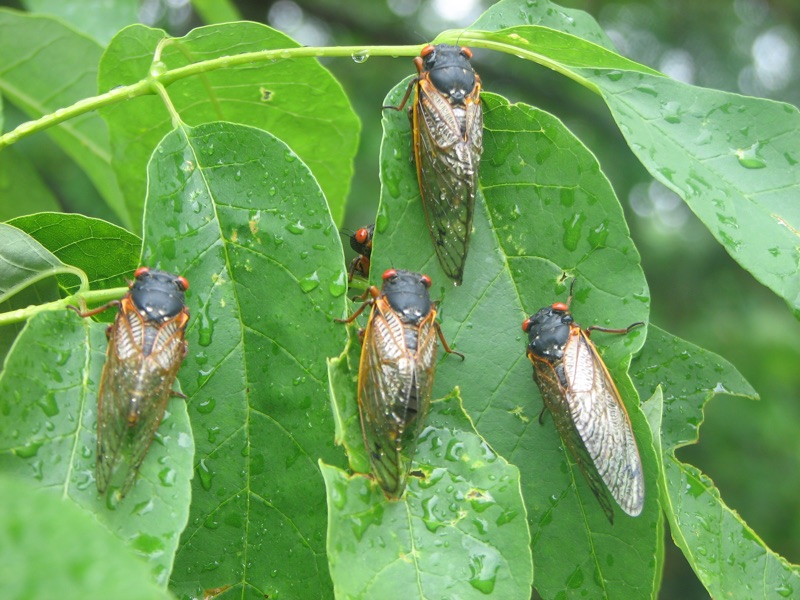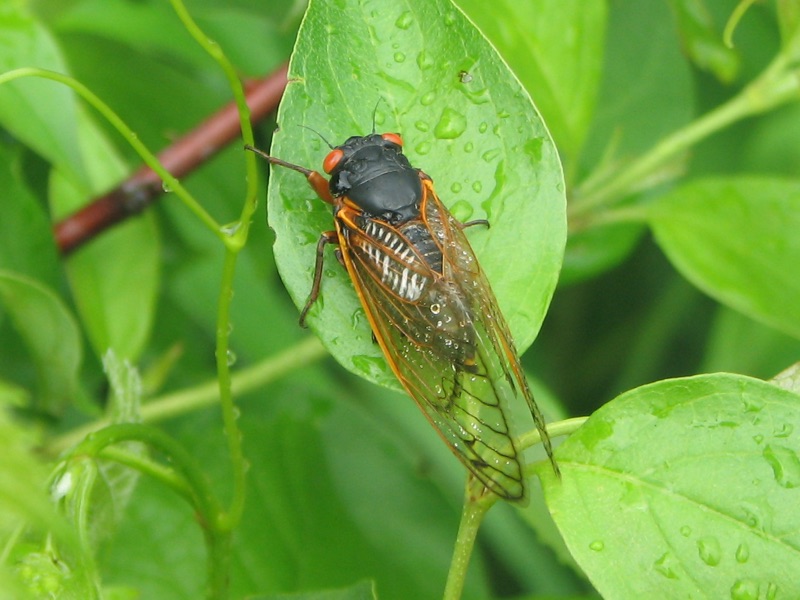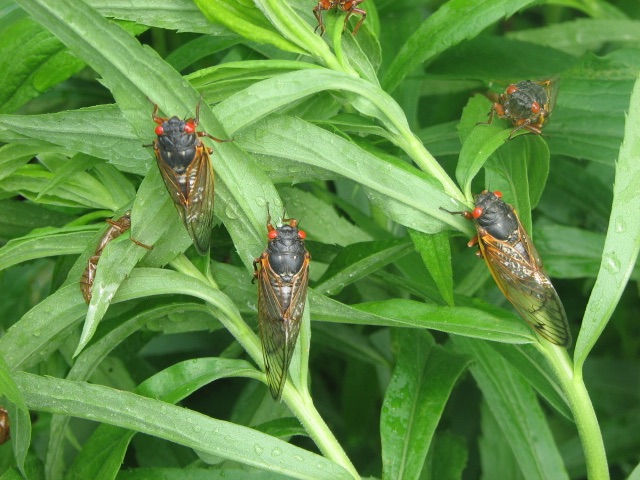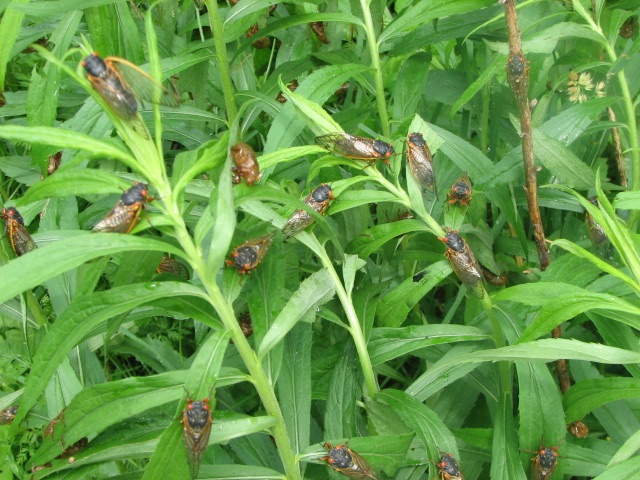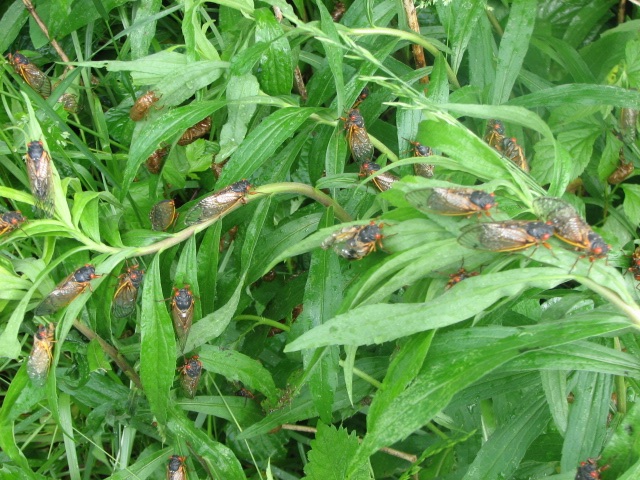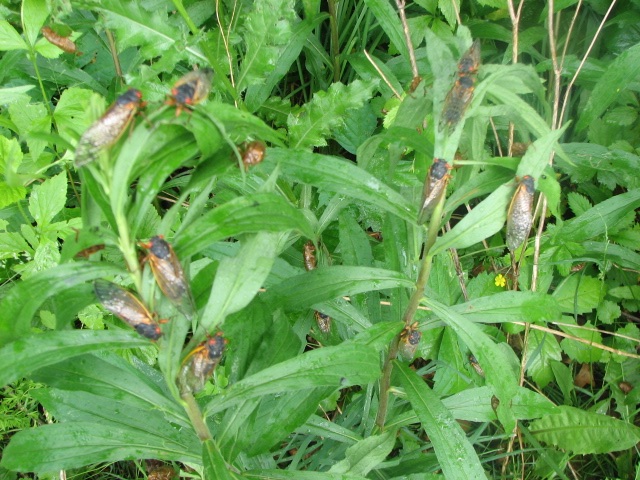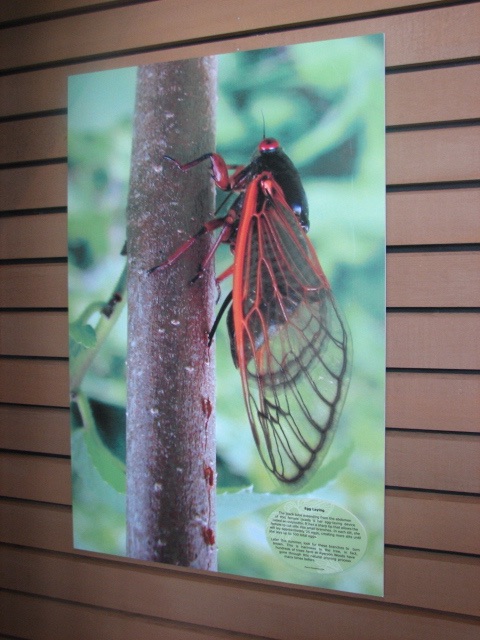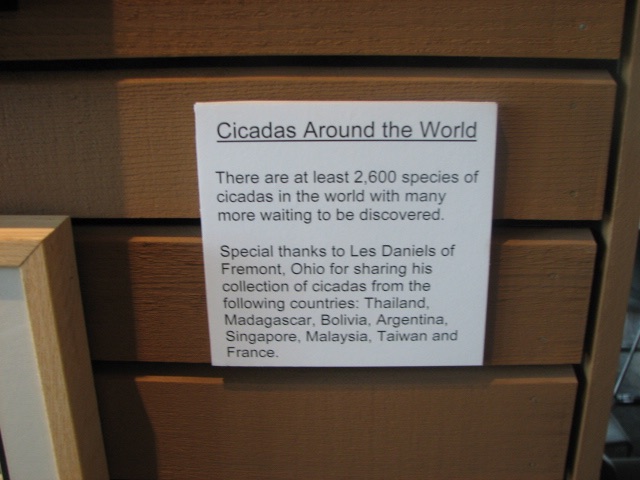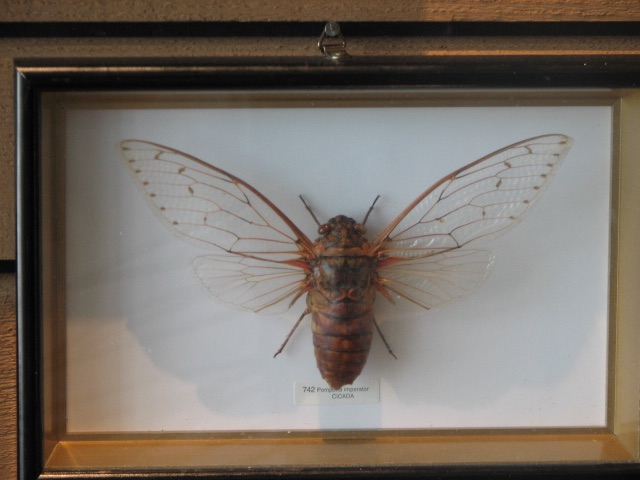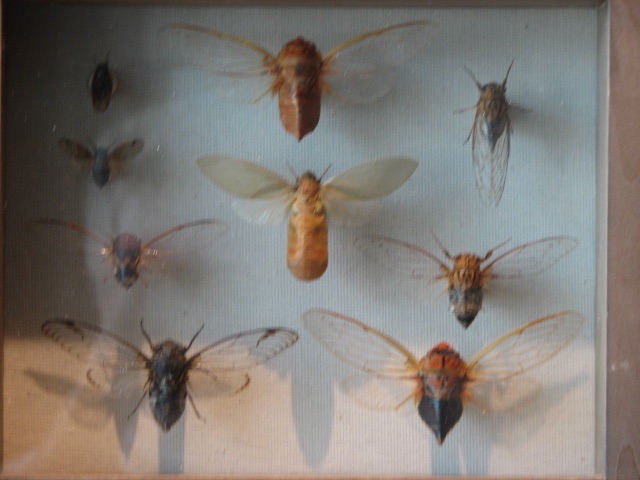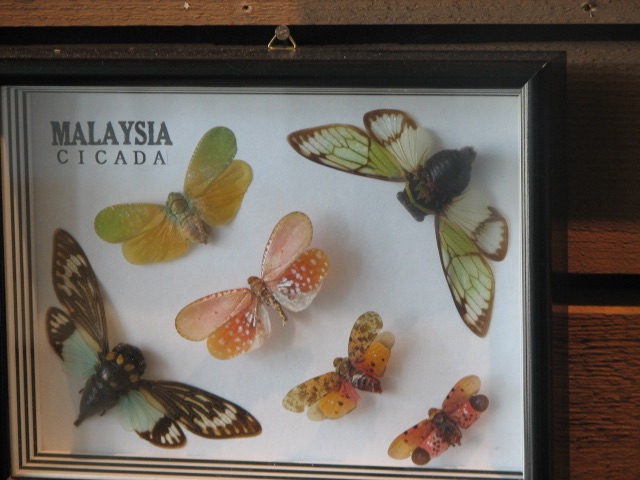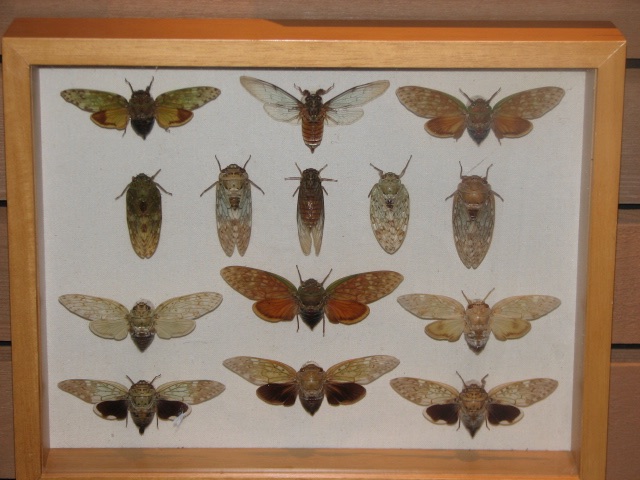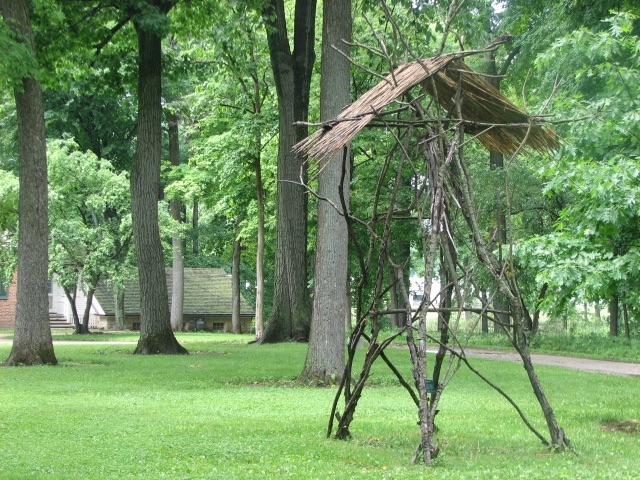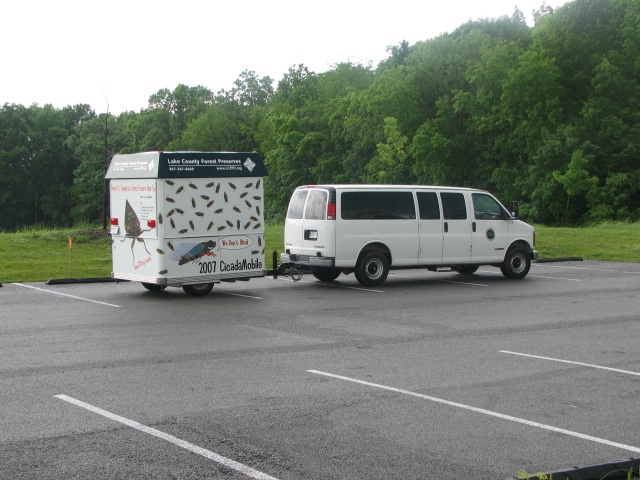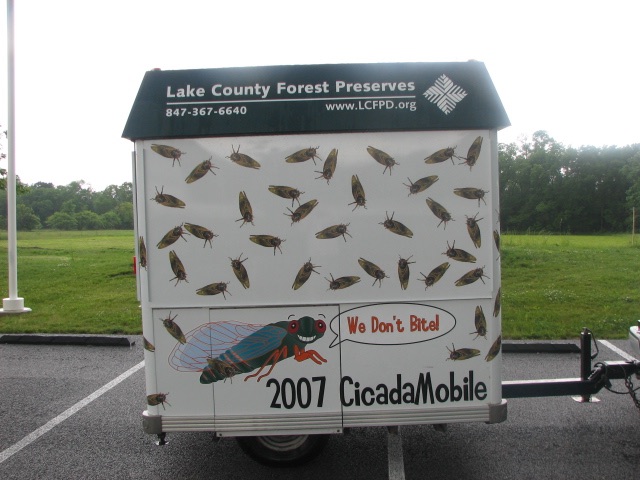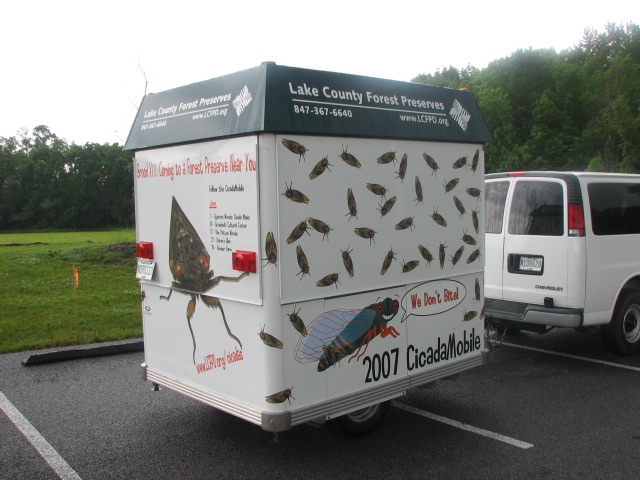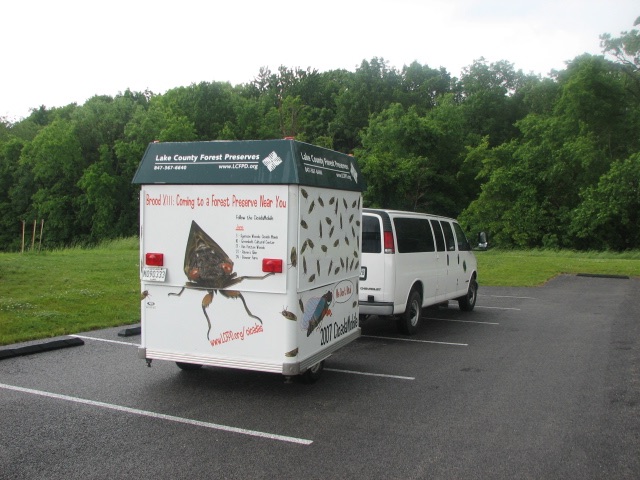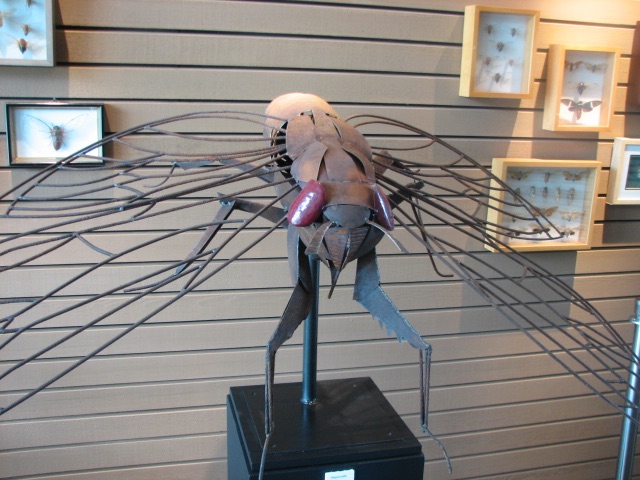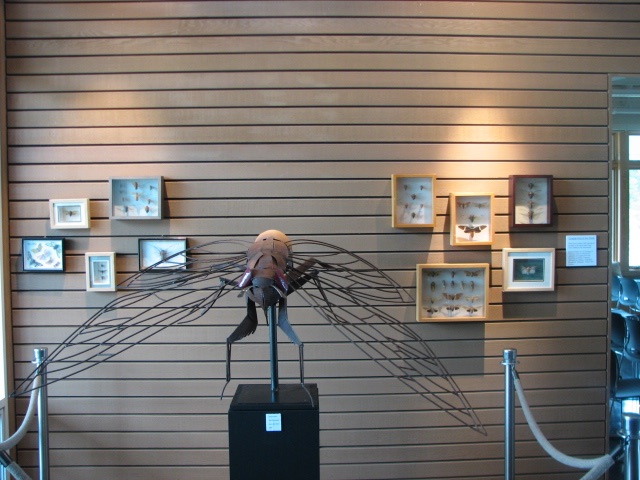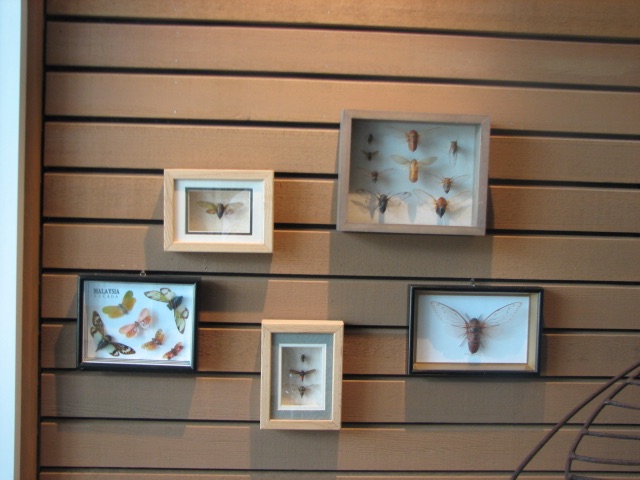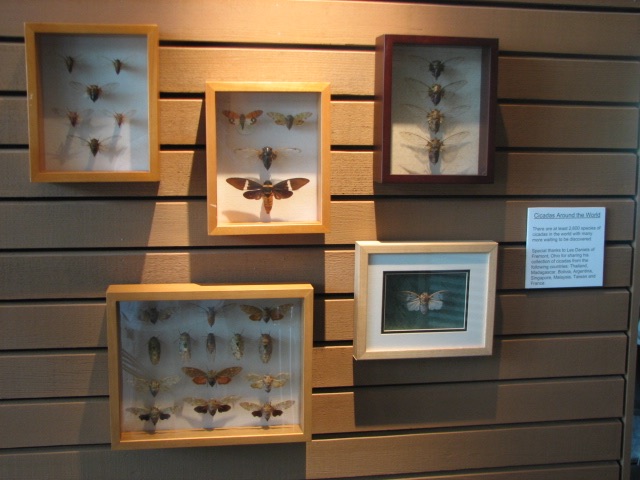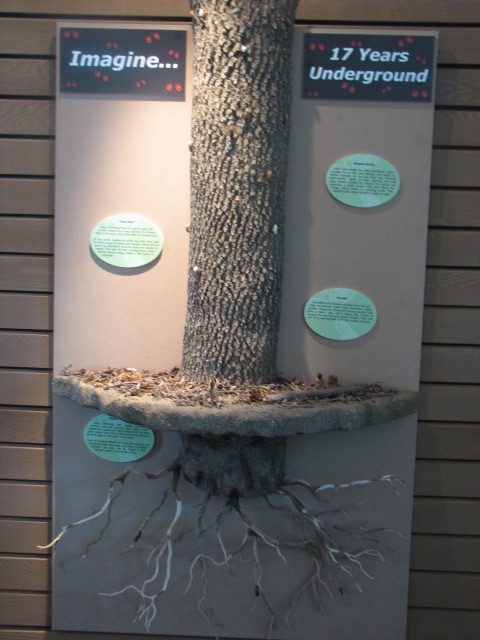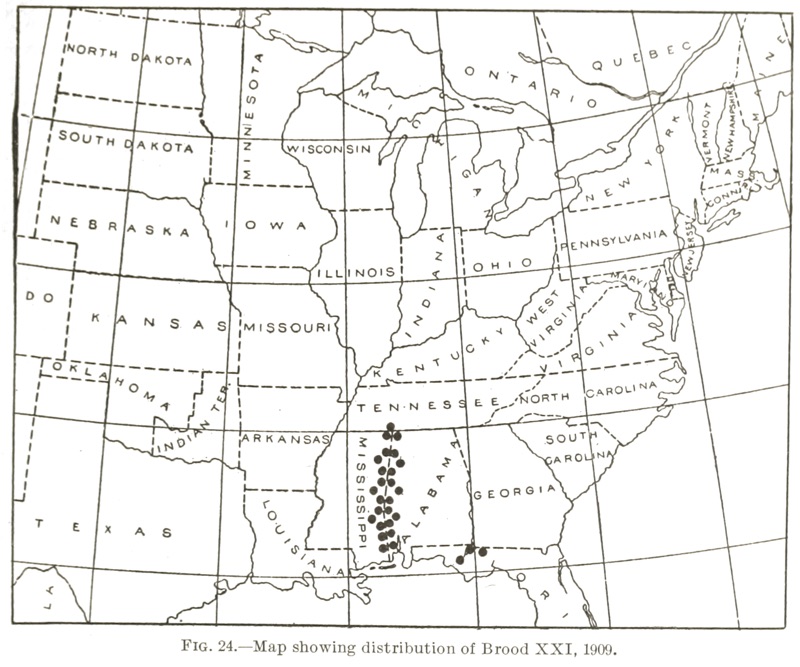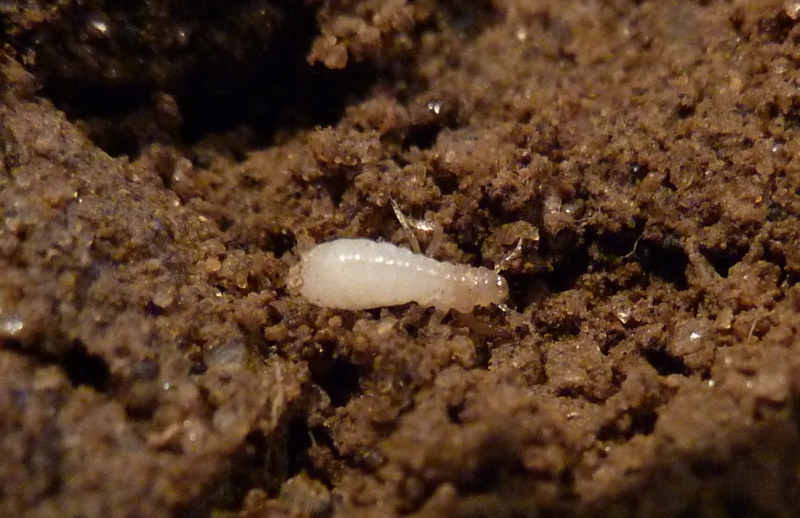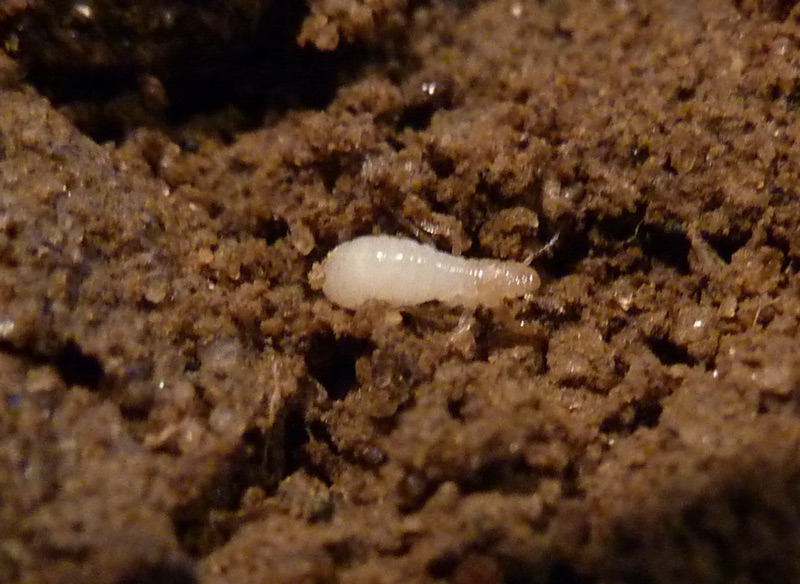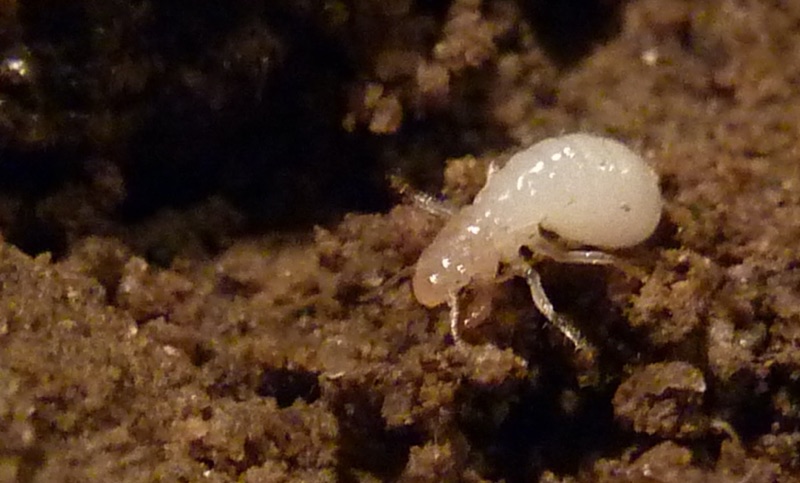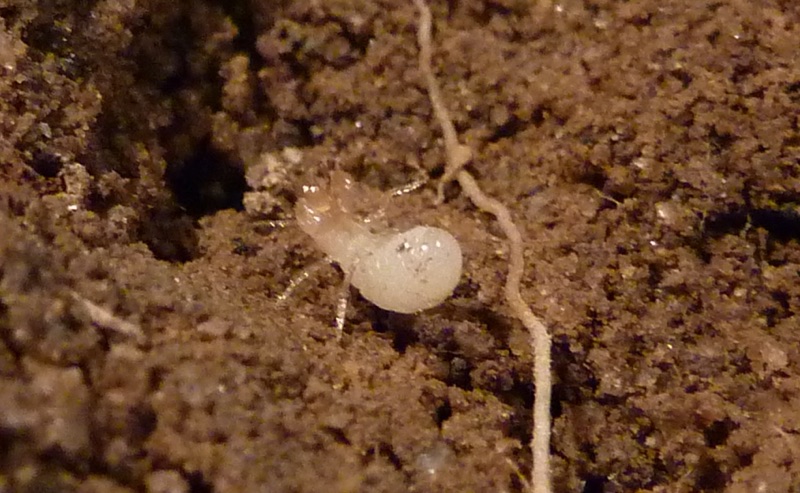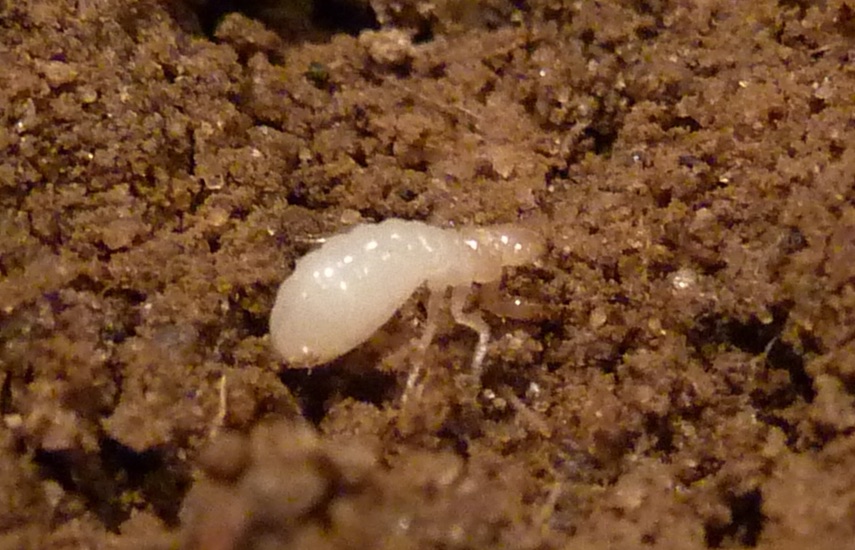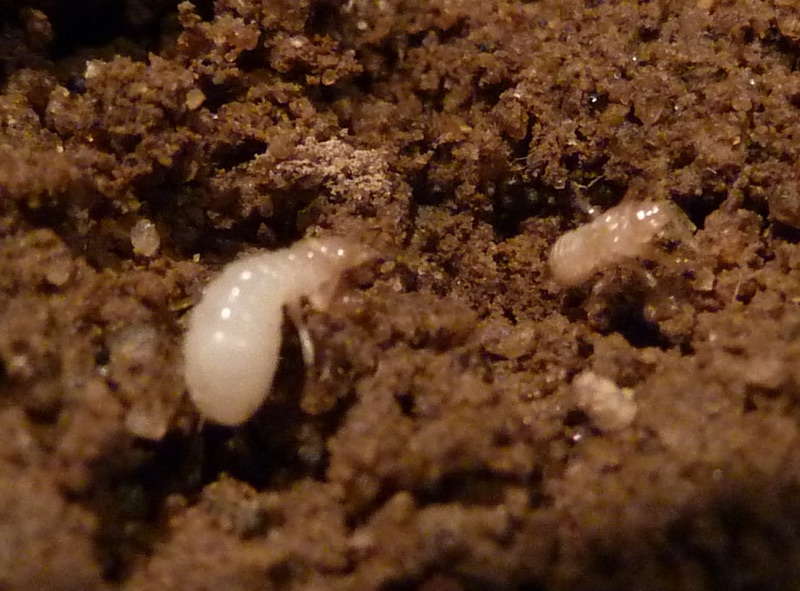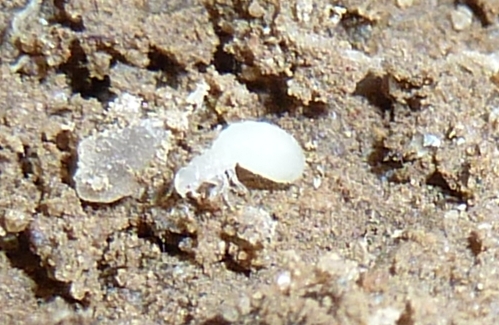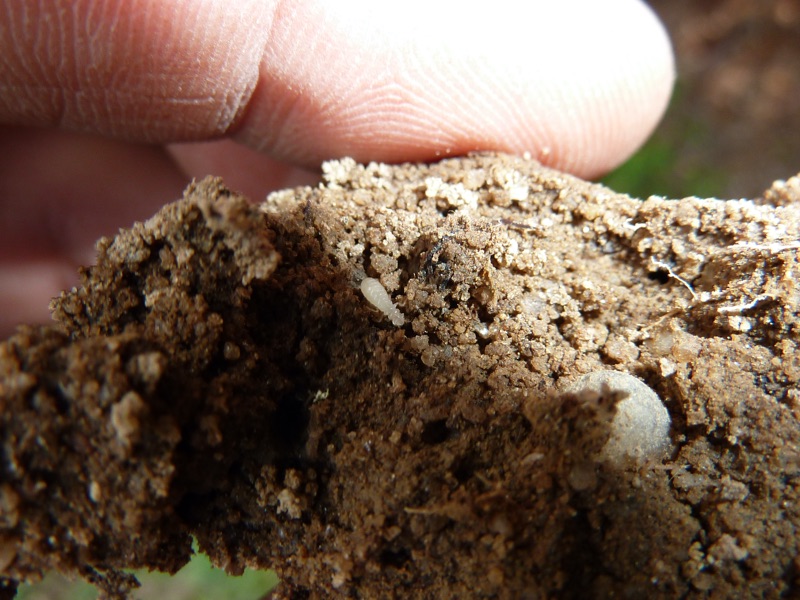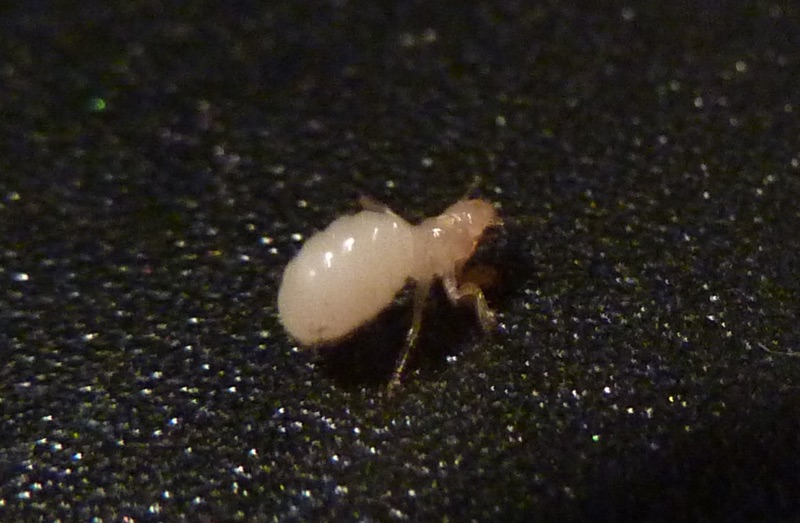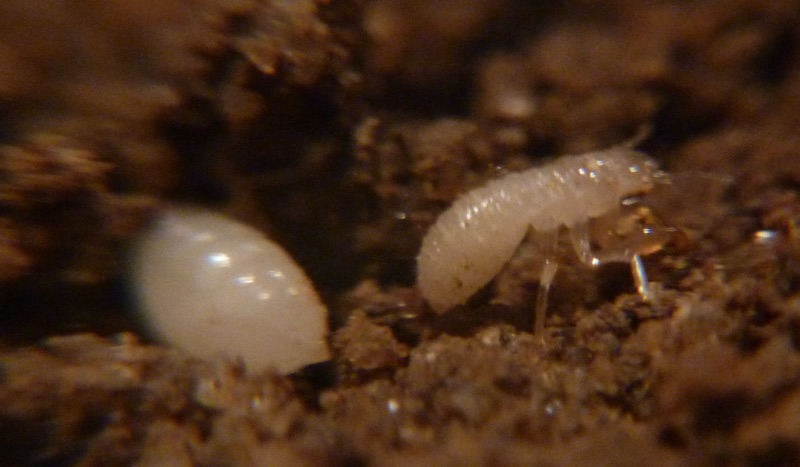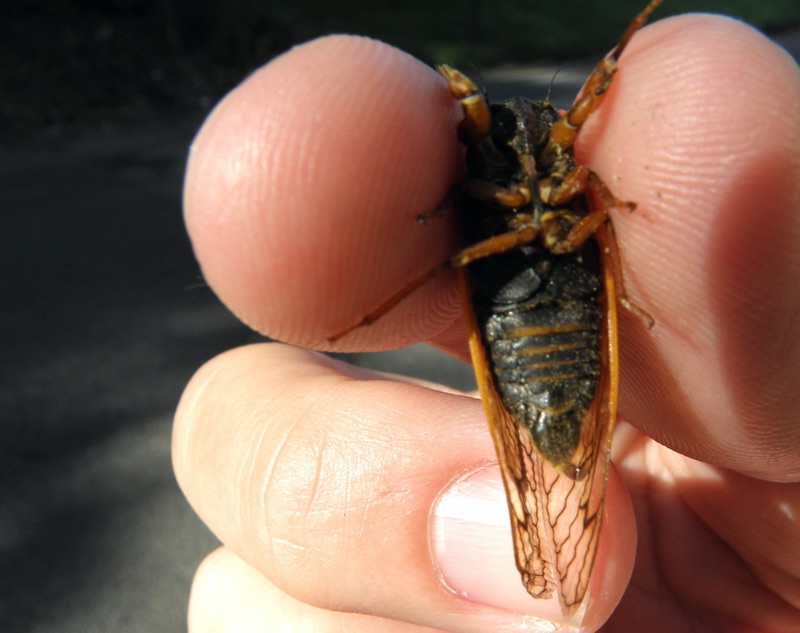
Photo credit: by Dan Mozgai. Brood II, New Jersey.
All Magicicada septendecula info and images on cicadamania.com.
Song type: Call
Source: ©Joe Green | Species: M. septendecula
Song type: Call
Source: ©Joe Green | Species: M. septendecula
Video
Video Playlist
Playlists contain multiple videos found on YouTube.
Identification Tips
M. septendecula is smaller than M. septedecim, and about the same size as M. cassisii. It typically has small (small compared to M. septedecim) orange stripes on its abdomen. It lacks the orange color between the eye and wing insertion point that M. septendecim has. Its chorus sounds like a ticking clock.
Brood Chart
Magicicada septendecula has a 17-year lifecycle.
| Brood | Year | States |
|---|---|---|
| I (1) | 1961, 1978, 1995, 2012, 2029 | TN, VA, WVA |
| II (2) | 1962, 1979, 1996, 2013, 2030 | CT, GA, MD, NC, NJ, NY, OK, PA, VA |
| III (3) | 1963, 1980, 1997, 2014, 2031 | IA, IL, MO |
| IV (4) | 1964, 1981, 1998, 2015, 2032 | IA, KS, MO, NE, OK, TX |
| V (5) | 1965, 1982, 1999, 2016, 2033 | LI NY, western MD, east OH, south-west PA, north-west VA, northern half of WV |
| VI (6) | 1949, 1966, 1983, 2000, 2017 | GA, NC, SC, WI, OH |
| VIII (8) | 1951, 1968, 1985, 2002, 2019 | OH, PA, WVA and OK |
| IX (9) | 1952, 1969, 1986, 2003, 2020 | NC, VA, WVA |
| X (10) | 1953, 1970, 1987, 2004, 2021 | DE, GA, IL, IN, KY, MD, MI, NC, NJ, NY, OH, PA, TN, VA, WVA, Washington DC |
| XIV (14) | 1957, 1974, 1991, 2008, 2025 | GA, IN, KY, MA, MD, NC, NJ, NY, OH, PA, TN, VA, WVA |
Name, Location and Description
- Cicada Name: Magicicada septendecula Alexander and Moore, 1962
- Short Name: M. septendecula
- Common Name: Decula Periodical Cicdada or 17-Year Cicada
- When: May-June. Peak in June. Every 17 years.
- Where it is found: GA, IA, IL, IN, KS, KY, MO, NC, NJ, NY, OH, OK, PA, TN, VA, WV
- Maps: Map
- Description: Black body with orange wings and legs. Orange stripes on abdomen.
- Eye Color: reddish orange
- Pronotal Collar Color: black
- Identification: Bug Guide
- Subject Matter Expert website: Cicadas @ UCONN (formerly Magicicada.org)
- Taxonomic Information: Integrated Taxonomic Information System
- Song: Cicadas @ UCONN (formerly Magicicada.org)
Classification:
Family: Cicadidae
SubFamily: Cicadettinae
Tribe: Lamotialnini
Sub-Tribe: Tryellina
Genus: Magicicada
Species: Magicicada septendecula Alexander and Moore, 1962
List of sources
- Full Binomial Names: ITIS.gov
- Common names: BugGuide.net; The Songs of Insects by Lang Elliott and Wil Herschberger; personal memory.
- Locations: Cicadas @ UCONN (formerly Magicicada.org)
- Descriptions, Colors: personal observations from specimens or photos from many sources. Descriptions are not perfect, but may be helpful.
- Tribe information comes from: MARSHALL, DAVID C. et al.A molecular phylogeny of the cicadas (Hemiptera: Cicadidae) with a review of tribe and subfamily classification.Zootaxa, [S.l.], v. 4424, n. 1, p. 1—64, may 2018. ISSN 1175-5334. Available at: https://www.biotaxa.org/Zootaxa/article/view/zootaxa.4424.1.1
Notes:
- Some descriptions are based on aged specimens which have lost some or a lot of their color.
